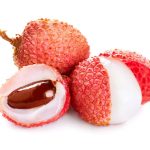 An appendage partially or completely enveloping the seed, sometimes resembling a third integument, and arising from the hilum, funicle or any other part of the seed coat; this term is sometimes used for any fleshy cup-like structure containing a seed.
An appendage partially or completely enveloping the seed, sometimes resembling a third integument, and arising from the hilum, funicle or any other part of the seed coat; this term is sometimes used for any fleshy cup-like structure containing a seed.
A specialized, usually fleshy outgrowth that is attached to the mature seed; more loosely, any appendage or thickening of the seed coat.
Secondary covering over the seed in certain plants.
Fleshy appendage to the seeds of a flowering plant. Arils are usually edible and aid the plant in dispersal of the seed.
A large appendage of the funiculus at the hilum (attachement area) of a seed. It tends to envelop the seed.
In flowering plants (angiosperms), a fleshy coat partly or completely surrounding a seed inside the fruit wall (not part of the fruit itself). Most often found in fruit that has an inedible outer wall that splits open to reveal the aril-covered seeds. In gymnosperms, seed plants that do not produce flowers or true fruit, arils are modified cone scales that form a fleshy coat around the seeds. Birds and other animals eat the fleshy coat and disperse the seed. Some small seeds of low-growing plants with arils are dispersed by ants.
Seed-covering, often fleshy and brightly coloured, of certain plants, such as Taxus baccata (common yew).
